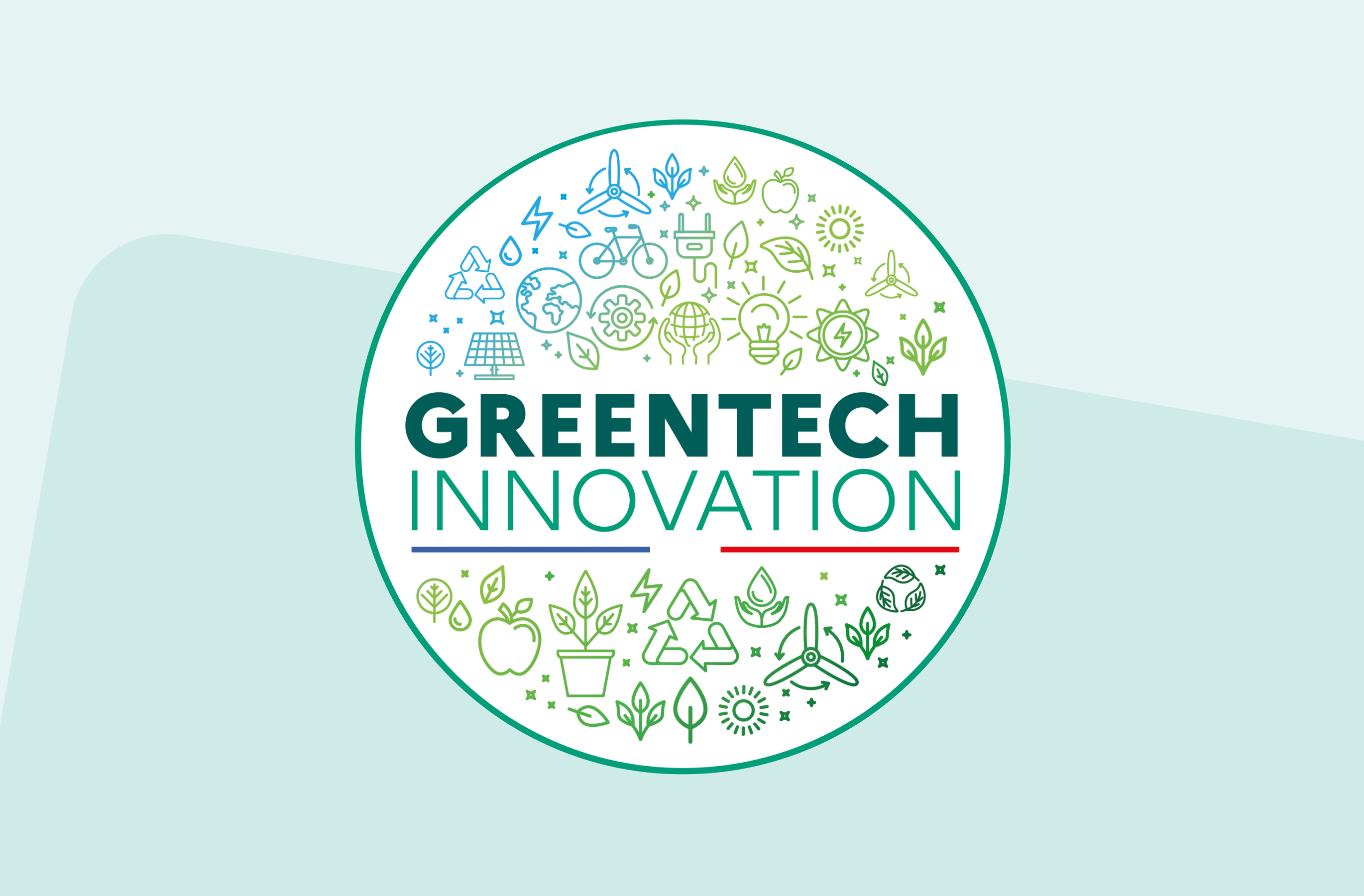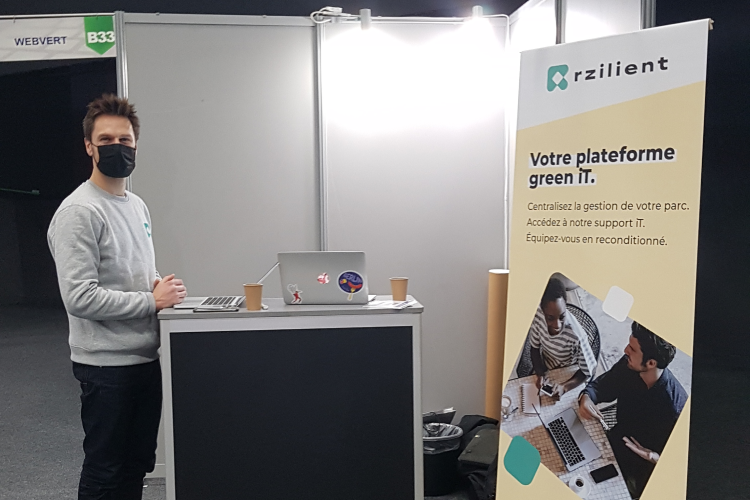Pourquoi mettre en place une stratégie de Green IT ?

Découvrez notre solution tout-en-un
Le Green IT, ou informatique verte, est une initiative pour les entreprises souhaitant minimiser leurs impacts environnemental de la technologie numérique. Cette approche vise à optimiser l'utilisation des ressources et à réduire les déchets. Cet article explore le concept du Green IT, ses applications pratiques, et les bénéfices qu'il peut offrir sur le plan environnemental et économique.
Qu'est-ce que le Green IT ?
Le Green IT fait référence aux pratiques et technologies que les entreprises utilisent pour réduire l'empreinte écologique de leurs activités informatiques numériques. Cela comprend la réduction de la consommation énergétique des centres de data, l'utilisation efficace des biens, et l'adoption de cycles de vie responsables pour les solutions technologiques. Ces stratégies encouragent l'utilisation responsable des actifs numériques, tout en optimisant la gestion énergétique dans les infrastructures numériques des entreprises.
L'évolution du Green IT : de Green IT 1.0 à 2.0
Le concept de Green IT a considérablement évolué depuis ses débuts, s'adaptant aux changements technologiques et aux exigences environnementales croissantes. Cette évolution peut être segmentée en plusieurs phases : Green IT 1.0, Green IT 1.5, et Green IT 2.0. Chacune de ces étapes représente une approche progressive et plus intégrée de l'informatique durable.
Green IT 1.0 les premiers pas
La phase initiale, Green IT 1.0, se concernait principalement la réduction de la consommation d'énergie des centres de données et des postes de travail. À cette époque, les organisations commençaient à prendre conscience de l'impact environnemental de leurs opérations informatiques et cherchaient des moyens simples et directs pour minimiser leur empreinte carbone. En France, de nombreux acteurs du secteur IT ont adopté des pratiques telles que l'optimisation des serveurs, le refroidissement plus efficace des data centers, et l'introduction de politiques de mise en veille automatique pour les solutions IT. Cette démarche visait principalement à améliorer l'efficacité énergétique sans repenser radicalement les processus informatiques existants.
Green IT 1.5 approfondissement de la stratégie
Cette phase a marqué une transition vers une intégration plus profonde de la durabilité dans les stratégies informatiques. Le Green IT 1.5 a étendu l'accent mis sur l'efficacité énergétique pour inclure également la gestion du cycle de vie des équipements informatiques. La réutilisation et le recyclage sont devenus des composantes clés, avec des initiatives visant à prolonger la durée de vie des dispositifs et à encourager l'utilisation de matériel éco-conçu. En France, les entreprises ont commencé à adopter des systèmes de gestion des actifs IT qui permettaient non seulement de réduire les déchets, mais aussi d'optimiser les équipements tout au long du cycle de vie des équipements. La démarche s'est alors enrichie d'une dimension circulaire, cherchant à maximiser l'utilisation des ressources tout en minimisant les impacts environnementaux.
.jpeg)
Green IT 2.0 vers une informatique durable
La phase actuelle, représente une vision intégrée de l'informatique durable. Cette nouvelle ère se caractérise par une démarche Green IT qui englobe non seulement la technologie elle-même mais aussi les processus d'affaires qu'elle supporte. Les entreprises en France et ailleurs sont désormais engagées dans l'adoption de pratiques qui non seulement réduisent l'impact environnemental de leurs opérations informatiques, mais qui contribuent également à la création d'une valeur sociale et économique durable. Green IT 2.0 inclut l'intégration de l'intelligence artificielle et de l'analyse de données pour optimiser l'usage énergétique, ainsi que le développement de nouveaux modèles d'affaires qui favorisent la consommation responsable et l'innovation durable. La démarche Green IT en France est devenue un modèle utilisé par de nombreuses industries qui cherchent à réconcilier croissance technologique et responsabilité environnementale.
Contactez nos experts pour mettre en place une politique de Green IT
Les meilleurs pratiques de Green IT
Virtualisation des serveurs
La virtualisation permet aux entreprises de réduire le nombre de serveurs physiques en exécutant plusieurs systèmes virtuels sur un seul serveur physique. Cette approche diminue la consommation d'énergie et l'espace requis pour le stockage des serveurs, contribuant ainsi à une utilisation plus efficace et écologique des ressources numériques. En optimisant les opérations des centres de données de cette manière, les entreprises favorisent une gestion plus durable et responsable des technologies numériques.
Gestion intelligente de l'énergie
Des logiciels de gestion de l'énergie permettent de monitorer et de contrôler la consommation énergétique des équipements informatiques. Utiliser ces logiciels pour optimiser l'usage de l'énergie dans les centres de données et les bureaux peut significativement diminuer l'empreinte carbone d'une organisation. Les entreprises peuvent également utiliser ces outils pour développer des stratégies permettant d'utiliser l'énergie de manière plus efficiente et responsable. Ces produits numériques aident non seulement à réduire les dépenses, mais aussi à améliorer l'efficacité énergétique des produits et processus existants. En intégrant ces produits dans leur gestion quotidienne, les entreprises peuvent optimiser leurs pratiques énergétiques et produire des résultats écologiques plus substantiels.
Utilisation de matériel éco-responsable
Choisir des équipements informatiques dotés de certifications écologiques, comme ENERGY STAR ou EPEAT, contribue à réduire l'impact environnemental du matériel numérique. Ces appareils numériques sont conçus pour être plus énergétiquement efficaces et sont souvent fabriqués à partir de matériaux recyclés ou recyclables, renforçant ainsi les pratiques durables dans l'industrie numérique. L'adoption de tels équipements numériques permet aux entreprises de minimiser leur empreinte écologique tout en optimisant leur infrastructure numérique. Par exemple, en France, de nombreux bureaux gouvernementaux adoptent ces normes pour améliorer leur efficacité énergétique et réduire leur impact sur l'environnement.
.png)
Recyclage et gestion des déchets électroniques
La gestion responsable des déchets électroniques est essentielle pour récupérer des matériaux et réduire la quantité de déchets dangereux dans les décharges, protégeant ainsi l'environnement. Cette approche contribue non seulement à préserver les ressources naturelles, mais joue également un rôle crucial dans la réduction de l'impact environnemental associé à l'élimination des technologies obsolètes.
Avantages du Green IT
Réduction des coûts
L'adoption de pratiques de Green IT peut entraîner une réduction significative des coûts énergétiques et des dépenses associées à la maintenance et au renouvellement des équipements informatiques. Cette démarche favorise non seulement une économie sur les dépenses opérationnelles mais renforce également une démarche écoresponsable au sein des entreprises, contribuant à une économie globale des ressources.
Amélioration de l'image de marque
Les entreprises qui adoptent le Green IT peuvent améliorer leur réputation en démontrant leur engagement envers la durabilité. Cela peut renforcer la loyauté des clients et attirer des talents qui valorisent la responsabilité environnementale.
Conformité réglementaire
Avec l'augmentation des réglementations sur l'efficacité énergétique et la réduction des déchets, adopter le Green IT aide les organisations à rester conformes aux lois environnementales, évitant ainsi des sanctions et des amendes.
.jpeg)
Cas concrets d'application du Green IT
Centres de données écologiques
Des entreprises technologiques mondiales ont mis en place des centres de données fonctionnant entièrement à partir d'énergies renouvelables, avec des systèmes de refroidissement avancés qui réduisent la consommation d'énergie.
Programmes de retour d'équipements
De nombreux fabricants d'équipements informatiques offrent des programmes de retour, où les appareils usagés sont soit remis à neuf et revendus, soit recyclés de manière responsable.
Technologies vertes émergentes
Les innovations technologiques continuent d'émerger, promettant de transformer l'informatique verte. Par exemple, l'utilisation de serveurs alimentés à l'énergie solaire ou l'intégration de matériaux biodégradables dans la construction de composants informatiques ouvre de nouvelles voies pour réduire encore davantage l'impact environnemental de l'industrie IT.
Les principaux défis du Green IT
Le déploiement du Green IT rencontre des défis, notamment des barrières techniques, des coûts initiaux élevés pour les technologies vertes, et des obstacles logistiques dans la mise en œuvre de programmes de recyclage à grande échelle. Ces défis nécessitent des solutions innovantes et un engagement continu de la part des acteurs de l'industrie.
Impact légal et réglementaire
L'environnement réglementaire autour du Green IT évolue, avec des lois et des normes qui façonnent les pratiques des entreprises. L'analyse des impacts de ces réglementations est essentielle pour comprendre comment elles influencent l'adoption de pratiques informatiques vertes.
Rôle de l'IA et de l'automatisation
L'intelligence artificielle et l'automatisation jouent un rôle crucial en améliorant l'efficacité énergétique des systèmes informatiques. Par exemple, des algorithmes avancés peuvent optimiser la consommation d'énergie dans les centres de données sans intervention humaine.
Formation et sensibilisation
La formation et la sensibilisation sont cruciales pour encourager l'adoption du Green IT. Des programmes éducatifs peuvent aider à équiper les professionnels IT avec les compétences nécessaires pour implémenter des pratiques durables.
Le Green IT est plus qu'une simple stratégie pour réduire l'impact environnemental des technologies de l'information; c'est une approche nécessaire pour que les entreprises fonctionnent de manière durable et économique. En adoptant des pratiques de Green IT, les organisations peuvent jouer un rôle significatif dans la protection de l'environnement tout en bénéficiant de coûts réduits et d'une meilleure image de marque.






